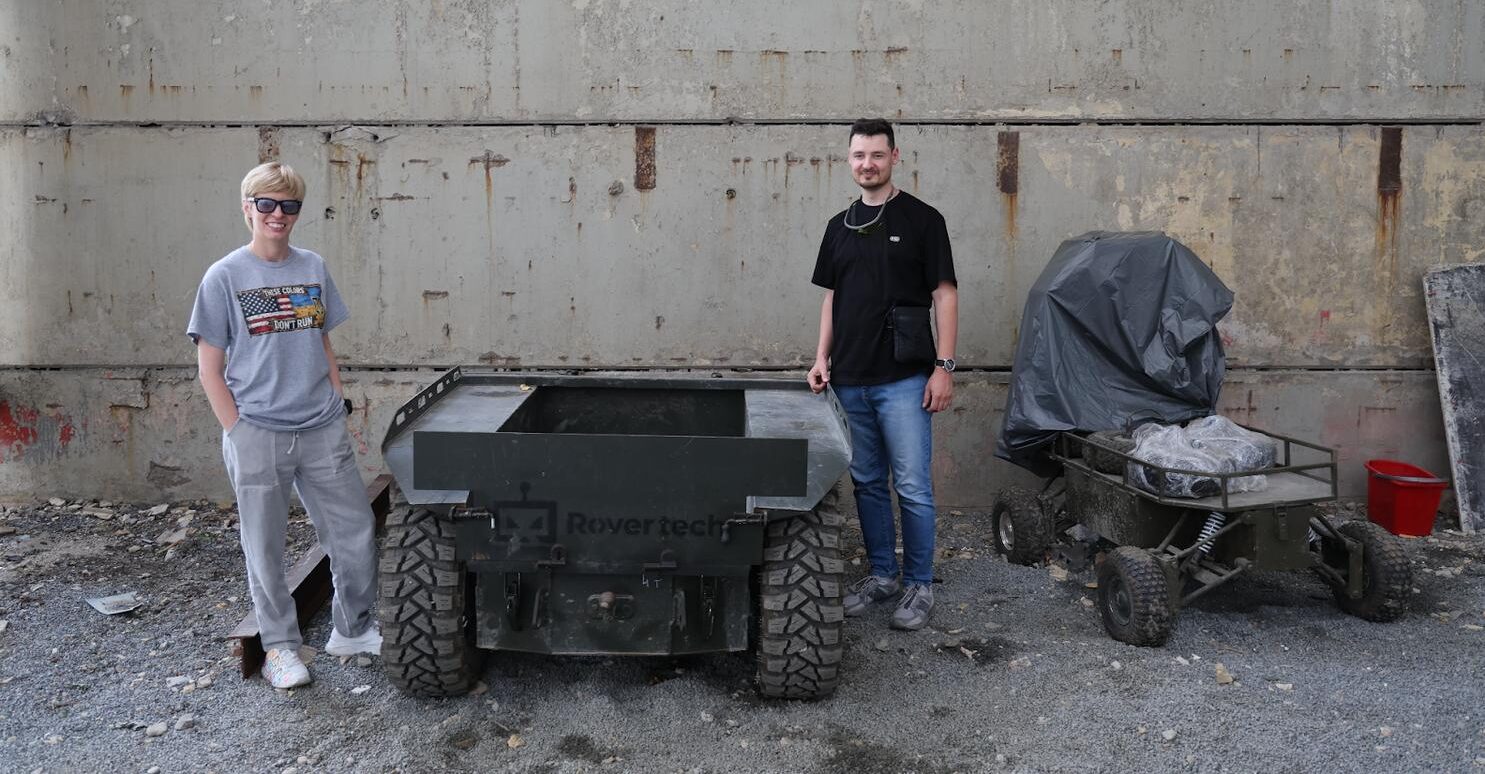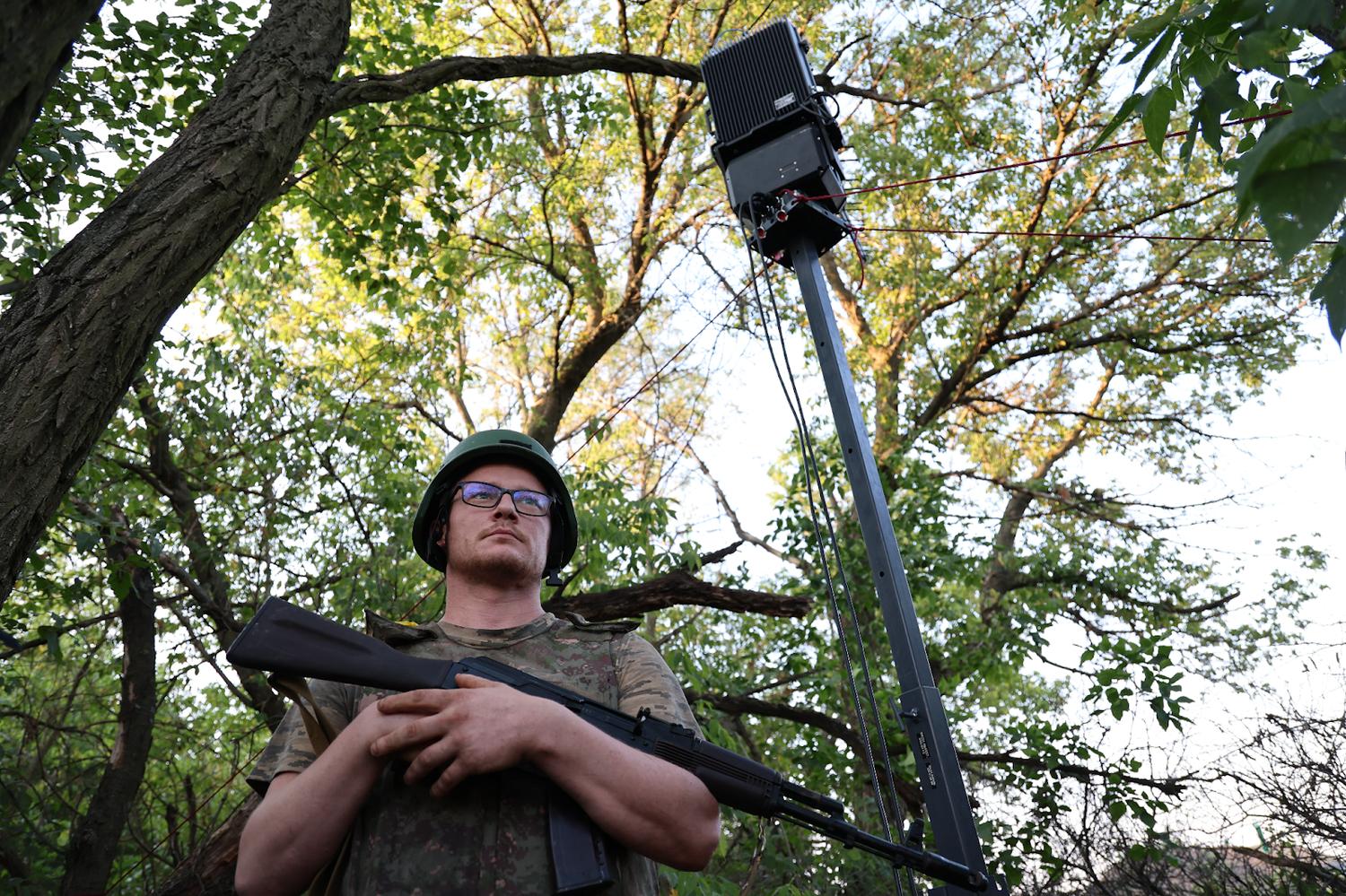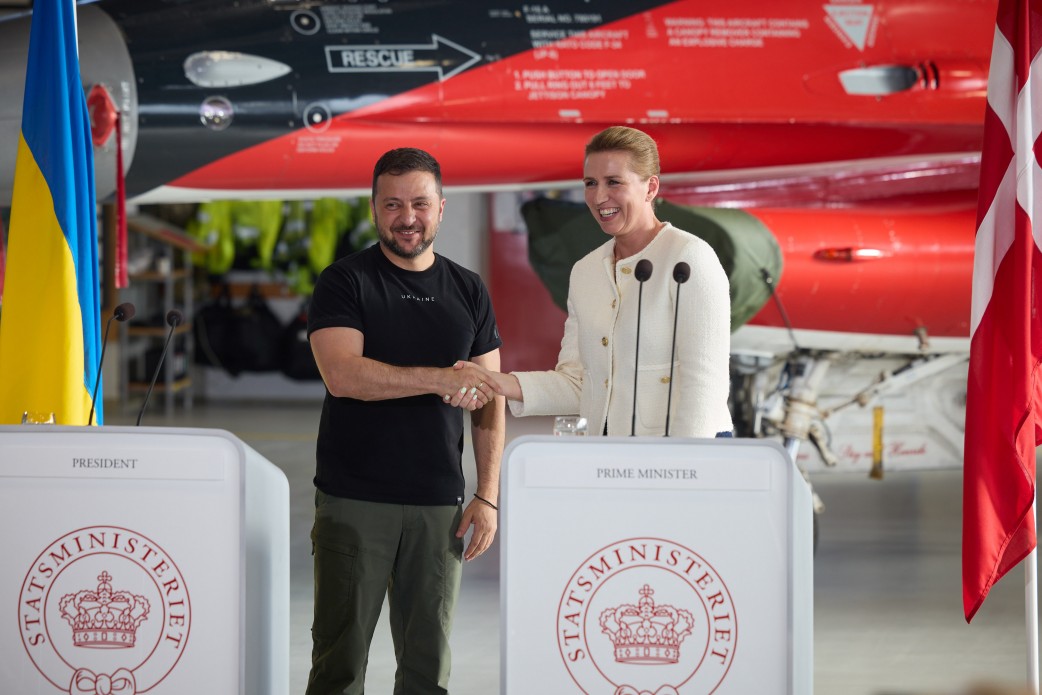Ukraine can triple defense production overnight—but swarm drones remain the missing piece
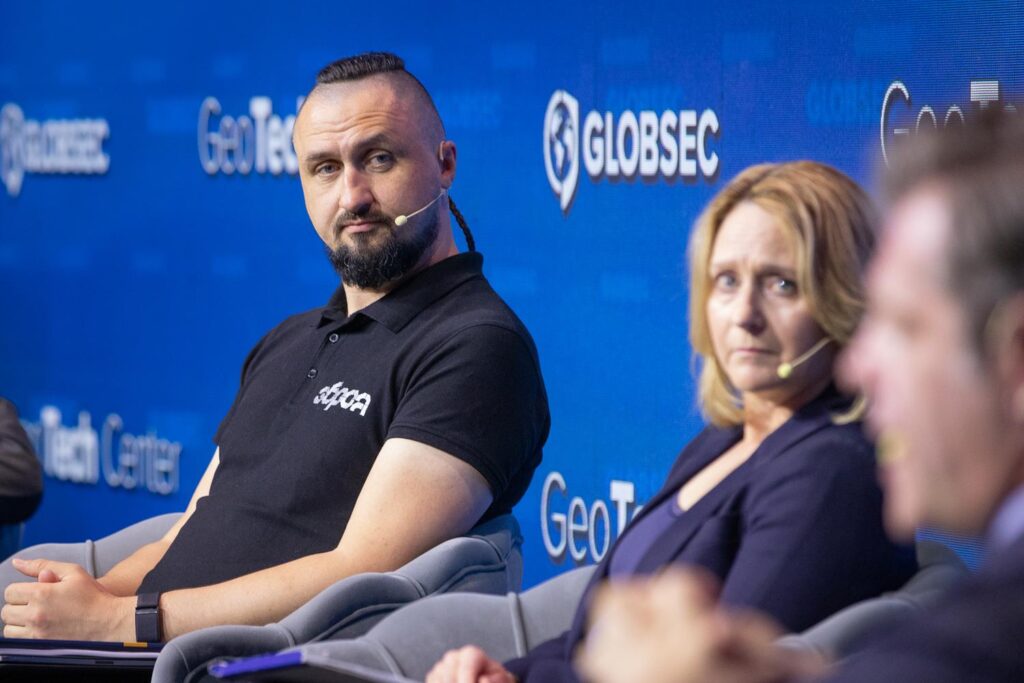
Ukraine’s defense factories could triple their current output tomorrow. The technology exists, the production lines are ready, workers are trained—but the contracts aren’t there.
This stark reality emerged from Oleksandr Kamyshin’s appearance at Prague’s GLOBSEC security conference, where Ukraine’s former defense minister made an even more striking admission: Ukraine still lacks the swarm drone technology that could reshape the war’s trajectory.
“We still need the swarm solution, coordinated solution,” Kamyshin told the international security forum. “It’s something we didn’t find across our partners.”
The gap comes as Ukraine’s June Operation Spider Web destroyed a third of Russia’s strategic aviation fleet, highlighting both Ukrainian capabilities and the technology still missing from their arsenal. In an exclusive interview with Euromaidan Press, Kamyshin revealed how Ukraine is transforming from aid recipient to Europe’s strategic defense partner—if Europe provides the funding to match the potential.
The man who increased Ukraine’s defense production sixfold as minister now serves as President Zelenskyy’s external strategic adviser, bridging Ukraine’s military-industrial complex with European partners increasingly viewing Ukrainian capabilities as their own strategic assets.
The production paradox: capability without contracts
Euromaidan Press: You transformed Ukraine’s defense industry as minister, increasing production sixfold. Now you’re an external adviser to Zelenskyy. How does your role differ?
Kamyshin: I was and still am responsible for the defense industry. But earlier, the question was whether we were capable of production; today, there is no question about that.
This is confirmed by our military leadership, our political leadership, and our international partners. You can see today that Europe perceives us completely differently—we have become their primary vehicle for strengthening European security.
Our defense industry has become strong. This didn’t happen overnight—this is long, painstaking work of a large team, a large industry, with constant support from the president.
Once we understood that we had the capability—that the industry was capable—and that financing was the main bottleneck, the president invited me to serve as his adviser. My role is to help integrate our defense industry into Europe and find opportunities to finance Ukrainian production through European channels.
This is mutual integration. The entire system now works clearly and cohesively. Herman Smetanin is doing excellent work. His team, the deputy ministers, the whole ministry, all our defense companies—both state and private—are delivering results.
EP: What are the main obstacles now standing in the way?
Kamyshin: We need money.
Europe’s fastest weapons pipeline
EP: What obstacles stand in the way of this money coming to Ukraine?
Kamyshin: Two years ago, no one believed Europe could finance Ukrainian defense production. Today this is reality. The successful cases started with the Danish model.
I will always be grateful to the Danish government and Prime Minister Mette Frederiksen for their leadership. It continued with European funds flowing through the Danish model, then the Norwegian model, now the German model. Other countries are joining. Today we have a working mechanism.
We call this mechanism the Manufacturing Freedom initiative, with subprojects like the Danish model, Norwegian model, German model—and there will be others. We’re ready to create new models. For us, the main thing is that Ukrainian defense industry gets financed.
It’s painful to have the capability, to see that what you can produce is urgently needed at the front, but lack contracts and funding to produce it.
Today our defense industry is capable of producing three times more than we are currently producing.
At GLOBSEC, Kamyshin emphasized Ukraine’s production philosophy: “We’re not in the competition for high-tech. We are in the fight. So we don’t try to be the most high-tech operation in the world.” Ukraine’s approach prioritizes effectiveness over sophistication, what he calls “smart power”—using intelligence and innovation to overcome numerical disadvantages.
The Danish breakthrough: from order to delivery in two months
EP: What help from the EU does Ukraine need most? Maybe there’s something where not only they should learn from us, but we—from them?
Kamyshin: At this stage, the main help we expect from Europe is financing our production capacities.
Denmark, Germany, the European Union, and other countries joining this model—they all recognized that our defense industry is capable.
- They assessed this as the fastest way forward: Denmark placed an order in July and received 18 artillery systems by September. The Dana delivery timeframe would be impossible anywhere else in the world.
- Second, this is the most effective approach—Ukrainian weapons today are competitive and offer the highest price-quality ratio.
- Third, this is the most efficient approach—what we produce works at the front. It’s proven through testing and battlefield application.
It’s fast, effective, and efficient. Our weapons have become smart power. We cannot beat Russia with quantity—we must beat them with quality and intelligence. Smart power is our only path to defeating our enemy.
This rapid innovation cycle was illustrated at GLOBSEC through the example of Shield AI, whose team fixed GPS jamming issues within 24 hours on Ukrainian front lines. The same drone system later participated in operations destroying a $90 million Russian S-400 air defense system—showcasing how proximity to combat drives innovation in ways peacetime development cannot match.
Kamyshin attributes this innovation speed to Ukraine’s existential circumstances: “Well, necessity is the mother of invention. We have to be creative. We have to be smarter. That’s the only way we can survive.”
This philosophy explains why Ukrainian defense companies can achieve in months what peacetime procurement processes accomplish in years.
Why factory experience matters in defense strategy
EP: This is a dramatic increase in production. We know the EU has certain struggles on this path. What can they borrow from Ukraine, what lessons, to radically increase their production?
Kamyshin: First and foremost, manufacturers should lead production expansion. Today, Minister of Strategic Industries Herman Smetanin is the youngest minister in our government, but he has the most production experience—over ten years of manufacturing experience from the factory floor. [Editor’s note: Smetanin’s ministry was dissolved after this interview was recorded; he was reappointed as CEO (General Director) of Ukroboronprom (Ukrainian Defense Industry).]
He started his career at a factory and today manages all of Ukraine’s defense industry. He’s a production specialist who understands how factories work, how production operates, and for him the task of expanding production capacity is clear.
I started my career the same way, working three years as director of the Karliv Machine-Building Plant. For both Smetanin and me, building production capacity is clear. This is what we understand from experience. Ukraine will be happy to share this experience in building production capacity with our European partners when the time comes.
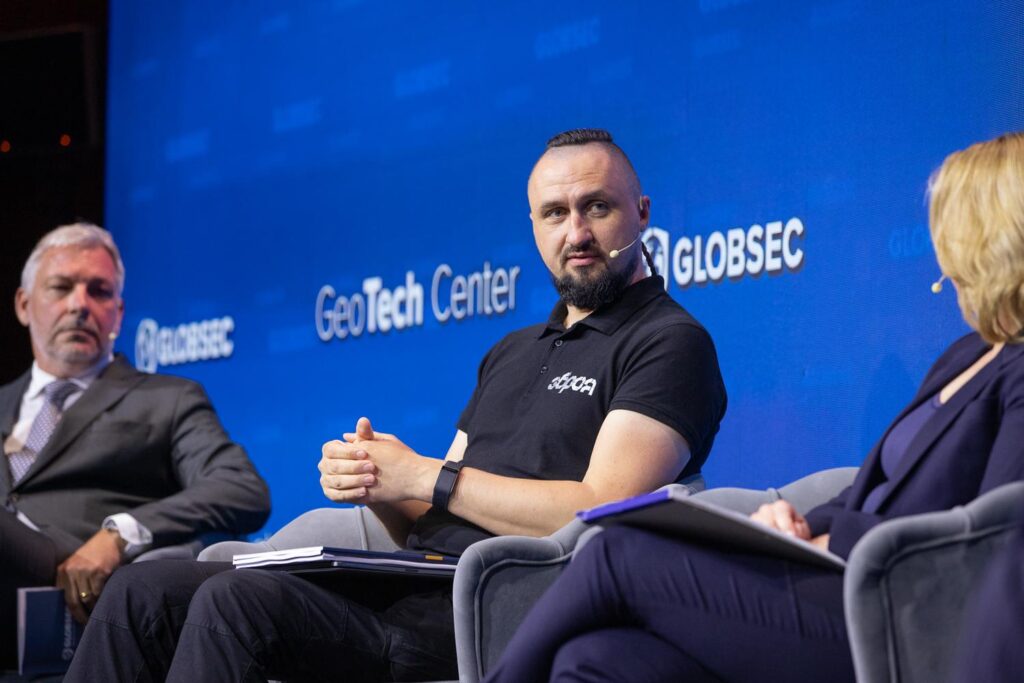
How Manufacturing Freedom actually works
EP: These Danish, Norwegian, German models – are these essentially grants for Ukraine’s production, free aid?
Kamyshin: These are not grants, these are contracts for production of our weapons and free transfer of these weapons to our armed forces.
EP: What other investment models are available for attracting funding to Ukrainian defense production?
Kamyshin: At this stage, the main task isn’t attracting investment—investment is about expanding capacity. The main task is loading the capacity that already exists. We constantly expand these capacities and build them up further in critical directions.
But generally, today our priority isn’t attracting investment to Ukraine—it’s getting work contracts for the production facilities that already exist.
Investment means building a factory that can produce drones. We have built factories that can produce drones, armored vehicles, missiles, ammunition, and much more. What we lack today are contracts for these factories.
Nordic leadership vs European hesitation
EP: Could you share which countries are most open to participating in Ukrainian defense procurement?
Kamyshin: Nordics, Baltics, Germany, Czech Republic are the most active.
EP: What does this depend on? What determines activity and inactivity?
Kamyshin: It always depends on leadership. That’s why I said I will always be grateful to Denmark’s Prime Minister Mette Frederiksen and her team for being the first to believe, the first to implement this story, and then other countries follow her.
The missing piece: swarm technology gap
EP: What are the biggest defense priorities on the battlefield? What technologies does Ukraine most want to develop now?
Kamyshin: Unmanned systems, air defense, and long-range weapons. These are the new technological solutions. Also, the application of artificial intelligence in all types of unmanned systems.
At GLOBSEC, Kamyshin expanded on this technological vision: “AI is part of all unmanned systems we use at the front line, and we try to integrate it in aerial, naval, and ground systems. Since recently, we’ve been using autonomous targeting for strike drones, for kamikaze drones.” But he identified the critical missing piece: “The last thing we are still waiting on the front line in scale is the swarm of drones, and that’s something that will give us even bigger change on the front line.”
EP: Can you name some recent Ukrainian achievements that would interest readers?
Kamyshin: We have our first good experience with AutoTargeting, Last mile targeting, and we’re bringing drone swarms to successful application.
The coalition math: why Ukraine can’t win alone
EP: As Zelenskyy’s strategic adviser, please tell me, can Ukraine win with the current level of EU support? Or is radical increase needed?
Kamyshin: Additional support is needed from both Europe and the USA. This is a big war. In this big war, the big country Russia is fighting, and it’s not fighting alone.
It receives substantial support from North Korea, from China, and from Iran. Against this background, Ukraine alone, or Ukraine only with Europe, will be difficult.
The free world, which America definitely belongs to, must stand against all these evils.
Strategic deterrence beyond current conflict
EP: If Russia rebuilds its army in three to four years, as experts predict, what must Ukraine and Europe achieve to prevent further aggression?
Kamyshin: We must have strategic deterrence weapons, in sufficient quantity, of sufficiently high quality. This must be regardless of when we end our war with our victory. We must have enough of this always.
Operation Spider Web: Europe’s security investment
EP: Ukraine brought the Russian war home to Russia with the help of long-range drones. Should Europe help Ukraine expand these capabilities? And what actually restrains European countries?
Kamyshin: Ukrainian long-range weapons are the best investment in European security. Operation Spider Web is probably the most successful operation to strengthen European security by destroying a third of Russia’s strategic aviation fleet.
Therefore, of course, the best investment in European security is Ukraine, Ukrainian defense industry, Ukrainian long-range operations.
Operation Spider Web, conducted in June 2025, exemplified Kamyshin’s effectiveness-over-sophistication philosophy. The operation destroyed or damaged over 40 strategic bombers using smuggled drones that cost under $3,000 each to eliminate aircraft worth $250 million apiece. As Kamyshin noted at GLOBSEC: “If that’s an FPV drone over 2,000 kilometers from the front line, it’s fine. We’re fine with that.”
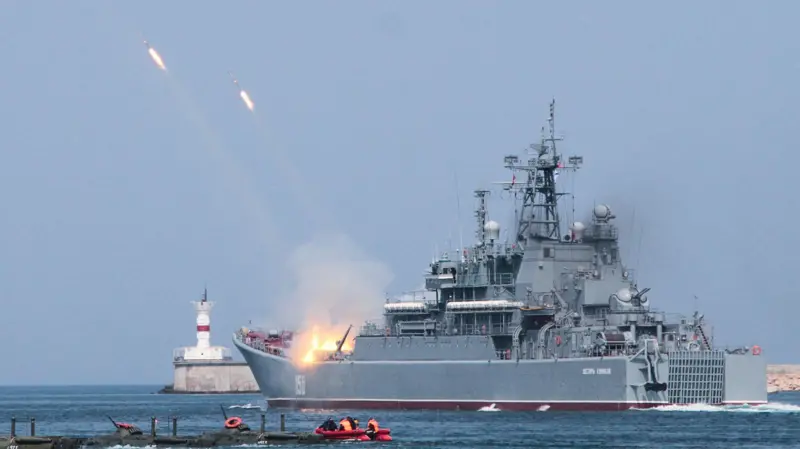
“Kill a navy for the price of a car”: Ukraine’s drones drove out Putin’s fleet from the Black Sea — then turned on his fighter jets
Denmark leads, Germany follows
EP: Are these investments happening now in this direction?
Kamyshin: Yes, they are happening. And the recent visit of the president to Germany announced that Germany is starting to invest in Ukrainian long-range solutions. And we believe that other countries will also join. This is just practice.
EP: Was Germany the first to pioneer long-range weapons investment, or were there others before?
Kamyshin: Not the first, but it joined. Denmark was before. There are other countries that also do this.
EP: What needs to change in Ukrainian and European legal frameworks to strengthen cooperation?
Kamyshin: We need to integrate into Europe not only at the political and economic level, but also at the legal level. A lot of work needs to be done for defense procurement in Ukraine to work properly.
Shahed production myth debunked
EP: Russia continues increasing Shahed drone production for attacks on Ukrainian cities. Ukraine doesn’t appear to produce similar long-range attack drones. What influenced this strategic choice?
Kamyshin: This is a myth that we don’t produce Shaheds. Shahed is a type of long-range drone that we produce and produce in significant quantities. We hit military targets, they terrorize cities. But we have such products, we’ve had such products since autumn 2023. Even there are products that are much more competitive than that. And in this regard, we definitely don’t lag behind in anything. Not in quality, not in quantity, not in anything.
Key strategic takeaways
Kamyshin’s perspective reveals several critical realities shaping the future of European security:
- Production capacity exceeds funding: Ukraine can triple output immediately if contracts materialize
- Swarm technology gap: Critical capability missing despite Ukraine’s drone innovation leadership
- European integration accelerating: From aid recipient to strategic defense partner in under two years
- Leadership determines participation: Nordic countries lead while others follow or hesitate
- Long-range capabilities proven: Operation Spider Web demonstrated cost-effectiveness of Ukrainian solutions
EP: Thank you very much.
Kamyshin: Thank you.
Oleksandr Kamyshin served as Ukraine’s Minister of Strategic Industries from March 2023 to September 2024, transforming the country’s defense production capacity sixfold. He currently serves as external strategic adviser to President Zelenskyy. This interview was conducted in Prague alongside the GLOBSEC security conference, where Kamyshin participated in discussions on the future of AI and autonomous systems in warfare.
More from GLOBSEC
-
GLOBSEC mapped seven Ukraine war scenarios through 2026. Even the “best case” spells future disaster.
-
Ukraine’s victory plan is dead, killed by Russian nuclear mind games
-
Frozen conflict Ukraine’s “best case scenario” because Russia has nukes, Kurt Volker says
-
This NATO defense minister tried to stop Russian propaganda. His country fell anyway
